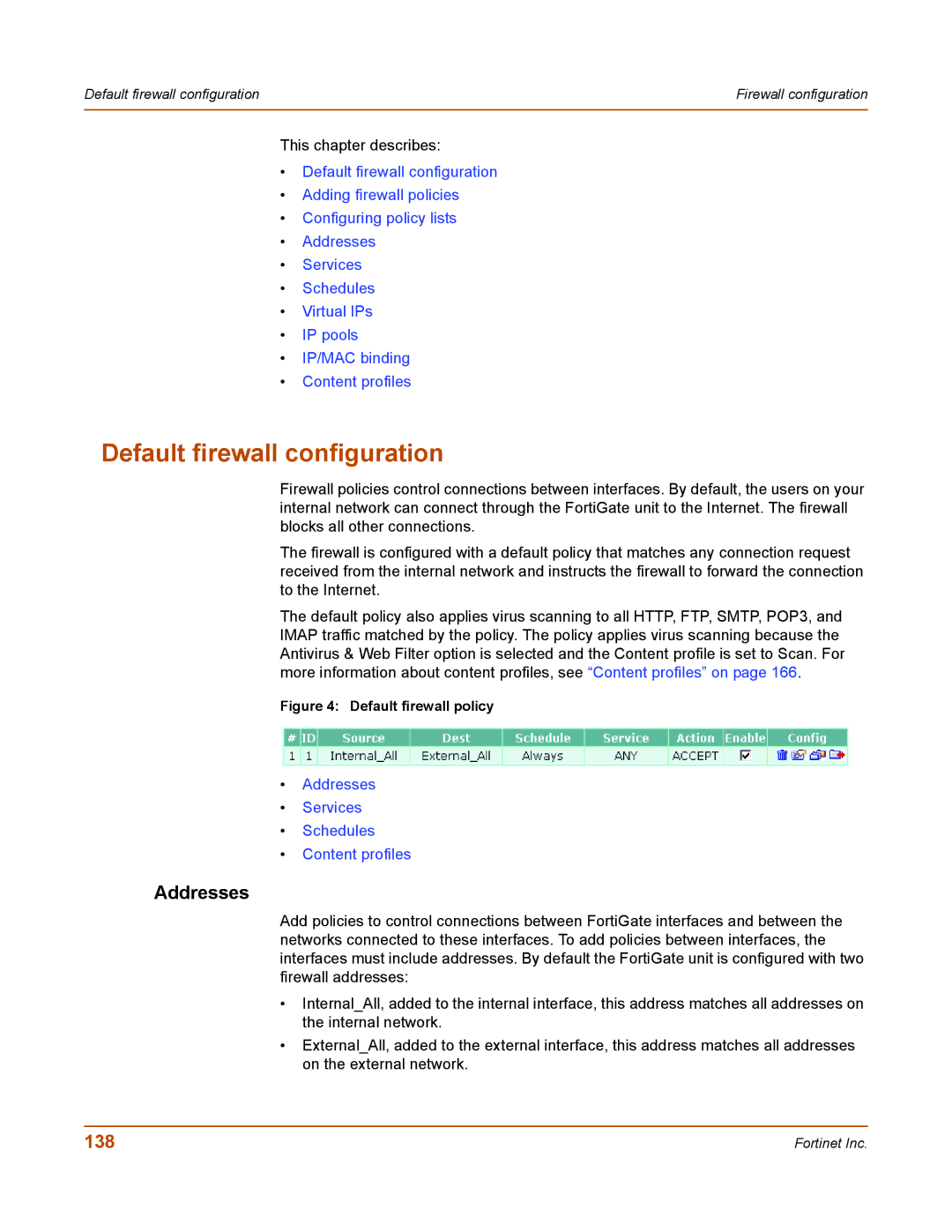
Default firewall configuration | Firewall configuration |
|
|
This chapter describes:
•Default firewall configuration
•Adding firewall policies
•Configuring policy lists
•Addresses
•Services
•Schedules
•Virtual IPs
•IP pools
•IP/MAC binding
•Content profiles
Default firewall configuration
Firewall policies control connections between interfaces. By default, the users on your internal network can connect through the FortiGate unit to the Internet. The firewall blocks all other connections.
The firewall is configured with a default policy that matches any connection request received from the internal network and instructs the firewall to forward the connection to the Internet.
The default policy also applies virus scanning to all HTTP, FTP, SMTP, POP3, and IMAP traffic matched by the policy. The policy applies virus scanning because the Antivirus & Web Filter option is selected and the Content profile is set to Scan. For more information about content profiles, see “Content profiles” on page 166.
Figure 4: Default firewall policy
•Addresses
•Services
•Schedules
•Content profiles
Addresses
Add policies to control connections between FortiGate interfaces and between the networks connected to these interfaces. To add policies between interfaces, the interfaces must include addresses. By default the FortiGate unit is configured with two firewall addresses:
•Internal_All, added to the internal interface, this address matches all addresses on the internal network.
•External_All, added to the external interface, this address matches all addresses on the external network.
138 | Fortinet Inc. |
